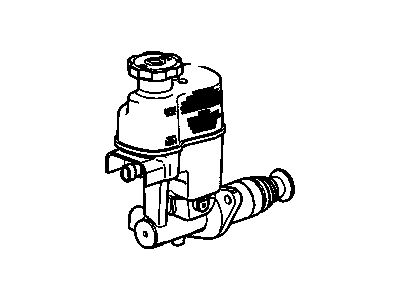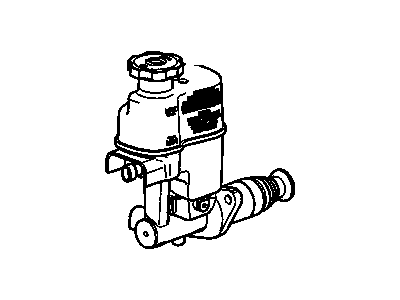
My Garage
My Account
Cart
Genuine Pontiac G6 Brake Master Cylinder
- Select Vehicle by Model
- Select Vehicle by VIN
Select Vehicle by Model
orMake
Model
Year
Select Vehicle by VIN
For the most accurate results, select vehicle by your VIN (Vehicle Identification Number).
3 Brake Master Cylinders found
Pontiac G6 Cylinder,Brake Master
Part Number: 25952633$224.63 MSRP: $437.85You Save: $213.22 (49%)Ships in 1-2 Business Days
Pontiac G6 Brake Master Cylinder
Brake Master Cylinder of the Pontiac G6 cars is a major part of Vehicle Braking System whose major function is to transmit the pressure generated by the driver's foot through the hydraulic system to the brake system's slave cylinder. This mechanism works through applying pressure on brake fluid that in turn acts on calipers or drum to provide the friction required to stop the vehicle. On the Pontiac G6 there is usually a dual circuit master cylinder to assist, if one of the circuits fails, the other will provide enough braking power. There has been a use of both cast iron as well as aluminum housing for the Brake Master Cylinders on Pontiac G6 models and depending on whether the reservoir is either built in the cylinder or external it has had its differences in the area of maintenance and fluid carrying capacity. The integral reservoirs have one cap only while another type of reservoir may be fitted with one or two threaded caps. Such a defect particularly points to the necessity of checking for leaks and moisture, since deterioration of the seals or corrosion will affect the performance thus the significance of the Brake Master Cylinder in ensuring safety while driving the Pontiac G6 automobile.
Each OEM Pontiac G6 Brake Master Cylinder we offer is competitively priced and comes with the assurance of the manufacturer's warranty for the part. Furthermore, we guarantee the speedy delivery of your orders right to your doorstep. Our hassle-free return policy is also in place for your peace of mind.
Pontiac G6 Brake Master Cylinder Parts Questions & Experts Answers
- Q: How to replace the brake master cylinder on Pontiac G6?A:The Brake Master Cylinder is located in the engine compartment, mounted to the power brake booster. Begin by removing as much fluid as possible from the reservoir using a syringe or an old turkey baster. Place rags under the fluid fittings and prepare caps or plastic bags to cover the ends of the lines once disconnected, taking care to protect painted surfaces from brake fluid damage. Depress the brake pedal several times with the engine off to remove vacuum from the power brake booster. Loosen the fittings at the ends of the Brake Lines where they enter the Brake Master Cylinder using a flare-nut wrench to prevent rounding-off the corners on these nuts, then pull the brake lines slightly away and plug the ends to prevent contamination. Disconnect the electrical connector for the brake fluid level sensor on the reservoir, remove the nuts attaching the Brake Master Cylinder to the power booster, and carefully pull the Brake Master Cylinder out of the engine compartment without spilling fluid. If installing a new Brake Master Cylinder, transfer the old reservoir if necessary, tapping out the retaining pins for models from 2005 to 2007, while ensuring new seals are installed. Before installation, bench bleed the new Brake Master Cylinder by mounting it in a vise and attaching bleeder tubes to the outlet ports, filling the reservoir with the recommended brake fluid. Slowly push the pistons into the Brake Master Cylinder to expel air, repeating until no more bubbles are present. Remove the bleed tubes, install plugs in the open ports, and then install the Brake Master Cylinder onto the power brake booster, tightening the mounting nuts only finger tight initially. Inspect the seal on the Brake Master Cylinder for damage before fully tightening the nuts and brake line fittings to the specified torque. Reconnect the electrical connector for the brake fluid level sensor, fill the reservoir with fluid, and bleed the Brake Master Cylinder and brake system by having an assistant depress the brake pedal while loosening the fitting to allow air and fluid to escape, repeating until the fluid is clear of air bubbles. Ensure to have rags on hand to catch any fluid, as brake fluid can damage painted surfaces, and rinse the area under the Brake Master Cylinder with clean water after bleeding. Finally, test the operation of the brake system thoroughly before returning the vehicle to normal service.






